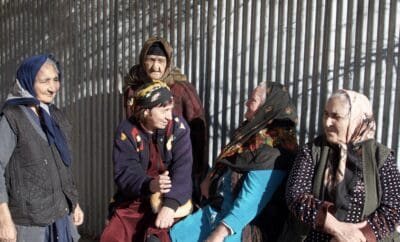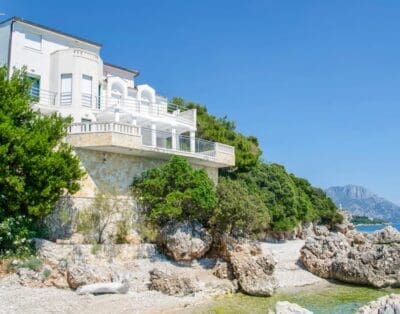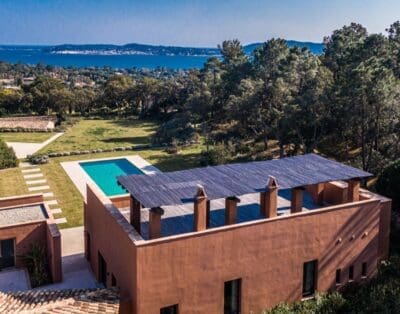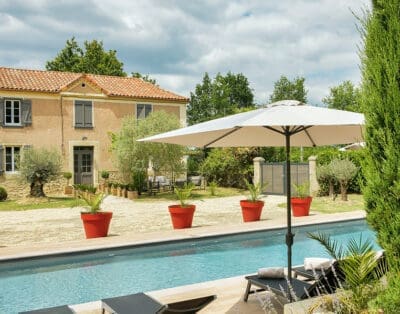The Journey To The Unrecognized State Of Nagorno-Karabakh
Dawn was just breaking in Yerevan, Armenia and the sun was starting to filter through the high rise buildings in the centre illuminating the mish mash of streets and buildings. The only people walking the street at 5.30 am were the unlucky few. Those who have early morning shifts at the hospital, the parking conductors, the cigarette venders or those heading towards the numerous construction sites across the city. Yerevan in the early morning is much like any other city, the rich and poor, the young and old and the pace of life are all very similar to say London, Paris or Milan.
Market sellers with old Ladas bumped and splurted out fumes as they navigated their way down the side streets. They jostled for the day’s spot and in turn, potentially how much they will earn. Peeking from behind the dust marked window of my hotel was not like viewing a different world, it was more normal than different. The South Caucasus Region is remarkably modern, with chain restaurants, espresso bars and tan coloured mannequins peering out from behind designer labels and generic luxury fashion brands.
The hour was approaching when breakfast would be served. Jumping in the shower and washing myself in a frantic manner with the tiny soap and the shampoo provided was a necessity if I was to make my deadline. The clock was ticking I had one hour no less to eat, arrange my bags and prepare myself for a gruelling journey of 8 hours into the mountains of Nagorno-Karabakh.
I knew Nagorno-Karabakh was a long drive and a bus would be the cheapest option however, when hauling lots of camera equipment and expensive, heavy gear I felt a taxi was surely the easiest option. I had spent two weeks travelling the length and breadth of Armenia proper and now I was ready for the unrecognised state of Nagorno-Karabakh. High up in the mountains, Nagorno-Karabakh is a piece of territory that is under international law within Azerbaijan, but under de-facto control of Armenian separatist forces with their own government. The images of separatist forces being bearded mad men with Kalashnikovs sung to their side and their chests riddled with bandoliers of ammunition and perhaps the cigarette hanging from the mouth is unavoidable. But Nagorno-Karabakh, as I later would discover, is unlike any separatist state I had previously visited. There were no weathered, gun toting rebels or gruff looking war veterans lingering around the streets, hungry for spare change of a pack of cigarettes. Nagorno-Karabakh is very much an organised territory and very accommodating to foreigners.
When the Soviet Union collapsed in the 1990s it opened the door to ethnic divisions and conflict throughout the post-soviet world. Riots, protests, civil wars and territorial claims became common place in those early years. Unreported to an extent in the western media, the post-soviet states had by and large their own mini revolutions and drastic changes. From the Caucasus mountain ranges to Central Asia and the Baltic states the now independent countries began to blossom with new ideas, opportunities and in many cases conflicts. Nagorno-Karabakh was no by-product of the Soviet utopian dream collapsing, it was a smouldering dispute that lingered in the minds of Armenians and Azerbaijanis for decades. Both the Azerbaijanis and Armenians call Nagorno-Karabakh their home land and both have historical, ethnic and religious ties to the land. When Gorbachev became head of a Soviet Union close to breaking point it was an uncertain time for millions of soviet citizens and more so for those on the peripheries of Moscow’s Russian centric policies’. Between 1988-1994 Armenia and Azerbaijan descended into chaos. Armenia was hit by a massive earthquake in 1988 that sent an already dented economy into free fall and pushed a population to the brink of tragedy. The war between Armenia and Azerbaijan was not for the most part a full frontal war with two well equipped sides facing one another in a battle. The war was more sporadic and like the South Caucasus region complicated in itself. The first few years were mostly skirmishes by either side and small battles over ethic pockets within Nagorno-Karabakh. The tragedy of war is always the human factor and both Armenians and Azerbaijanis became refugees as a result of the conflict. Armenians from Azerbaijan fled to Armenia and Nagorno-Karabakh and Azerbaijanis fled from Armenia and Nagorno-Karabakh to Azerbaijan.
Between these years two incidents have epitomised tragedy for either side, they were the events in Sumgait and Khojaly. The Armenians and Azerbaijanis believe different versions of both events and both have spent years arguing against the other. I will leave it to the reader to either read up on the events or be patient and in the future I will write a condensed version of these events. The later years of this conflict were far more ferocious than the former. Both sides had managed to amass weaponry from the deserting Soviet soldiers and recruited mercenaries to their side. The battles started to yield greater losses on both sides and the war became almost a stalemate. In May 1994 with both sides exhausted by years of war, both sides agreed to a ceasefire. The line was drawn and the Armenian forces dug in, as did the Azerbaijanis. The Armenians had taken control of Nagorno-Karabakh and seven surrounding territories from the Azerbaijanis and set about constructing a world war one styled system of trench emplacements and bunker fortifications. The ceasefire has been nothing more than the construction of an organized shooting range with both sides acting as victims and culprits. The two opposing sides regularly shooting one another with artillery or if the other peers above the parapet a high-powered sniper rifle is never far away. The OSCE Minsk group was created in 1992 for the purpose of encouraging a peaceful, negotiated resolution to the Nagorno-Karabakh conflict between Armenia and Azerbaijan. France, Russia and the United States are co-founders of the Minsk Group. The OSCE Minsk Group has achieved little success over the years and indeed with Russia supplying both countries with military equipment, many consider the whole thing a farce.
The leaders of Armenia and Azerbaijan have made Nagorno-Karabakh a priority for years and in some ways their political careers are inexplicably tied in with this smouldering conflict. Serzh Sargsyan came into power in some respect propelled by his war time record and keeping Nagorno-Karabakh Armenian has always been at the forefront of his politics and governmental policies. Mr Ilham Aliyev is in much the same situation. Heydar Aliyev was the leader of Azerbaijan during the war and declared how he would firstly retake Nagorno-Karabakh and secondly allow the refugees and IDPs to return to their homes. Ilham inherited his father promises and has always stated that retaking of Nagorno-Karabakh and the returning of Azerbaijani civilians to their land is his top priority.
It was time, 7am on the dot as the helpful receptionist had put it the previous evening. Staggering down the stairs laidened with heavy bags and a rucksack full of expensive, uninsured camera equipment I lumbered towards the front door and placed the load down. “Sir your taxi will be ten minutes” the young receptionist said and so fetched me an Armenian coffee to while away the time. The Armenians call Turkish coffee, Armenian coffee for obvious reasons. It seems the animosity between Turkey and Armenia even stretches into the banal and the ordinary.
The receptionist called after a few sips of the well needed bitter coffee and hastily picked up my bags and rushed outside to the waiting car. The taxi was more of a lift from a friend than a registered taxi in the strictest western sense. A carefully maintained dark red Lada was to be my chariot into the mountains of eastern Armenia and on to Nagorno-Karabakh.
With basic Russian and animated hand movements the driver and I communicated over the duration of the journey. He had been young when the war broke out and had served as a tank driver in Nagorno-Karabakh. From driving a tank to ferrying journalists seemed an interesting career change but considering from this drive alone he would make more than ample money it was understandable. The ruggedness of the car fitted well with the relaxed smoking policy. Watching the driver spark up a Garni (Armenia’s most popular cigarette) as we sped down the smooth road in the centre of Yerevan was a wonderful thing. In the west the hysteria of all things health and safety can become a bore and it was enjoyable to see in Armenia that personal choice is still in the individual’s hands. Towards the outskirts of the city you pass the less well-off neighbourhoods and under a maze of bridges and tar patched roads.
When the outer edge of the city is in sight you can see off in the distance the famous Mount Arat rise in all its grandeur. To the Armenians Mount Arat is a holy mountain and traditionally Armenian land. It’s where Noah’s Ark is supposed to have docked after the biblical floods that washed away the sins of the old world. Armenia being the first Christian country it’s understandable that Mount Arat holds a special place in their hearts. The driver motioned to the Mountain as we approached along the highway. His deep voice bellowed out “Arat” as a plume of smoke escaped his nostrils and the crevices of his mouth. “Beautiful”, I replied not being fully aware of how to express myself in Armenian.
The drive is worth the cost and perseverance if not for the experience, at least to take in the stunning surroundings southern Armenia has to offer. It’s a bizarre experience to pass from fields to mountains, past ravines to caves and by the side of rivers and streams all in the space of a few hours drive. The drive takes you right from the middle of the Armenian capital to the back regions, hardly explored by many tourists. Like the scenery the weather changes drastically as you pass down the country. You can be in the baking Caucasus sun one minute and then in amongst the mountains and the rain or slowly preceding through a low hanging mist that seems to suffocate the road as it spills around the mountainous bends in the road.
The entry point we took was through the Lachin corridor. Lachin has always been a key strategic district of Nagorno-Karabakh and it is an essential land line between Armenia and Nagorno-Karabakh. To get to Lachin you pass through several towns, most noteworthy are Balak, Sisian and Goris. Along the road from the capital in random intervals depending on the available shade you see dozens of road side stalls selling fruit, drinks and locally produced vodka. Goris is famous for its local vodka that is often made using mulberries that grow in abundance everywhere. The vodka from Goris is famous throughout Armenia and among the Armenia diaspora for its quality and natural production. I had to try and for an extremely reasonable price I picked up a bag of peaches, apricots and a bottle of vodka.
Eventually, four hours into the drive we approached the famous Lachin corridor. The essential life line of this separatist state nestled inside a neighbour hostile to the rebellious disregard to international law. Entering into a separatist state is always a different experience from jumping off the plane at Charles de Gaulle or queueing at Heathrow. Nagorno-Karabakh is a lot friendlier and easy to access than say Transnistria or Abkhazia. The check point to enter is a modest building with a public toilet and a shop with a few stray dogs bathing in the sun. Getting out the car and presenting my passport to the Nagorno-Karabakh guard was simple enough as the driver explained what we were doing. The guards look like soviet styled police men with carefully ironed white shirts and peaked olive green hats, star embroiled epaulettes and polished shoes. Although on this day there was no formal proceedings, no national anthem playing in the background or goose stepping soldier parading around a forecourt. Just simply a group of guards performing the day to day routine of checking Armenians or tourists coming and going to Nagorno-Karabakh. The guards were polite and flicked through the British passport carefully checking the visas as they went.
After the formalities we were on the way again and heading deeper into mountainous Karabahk. The mountains get larger and larger and the forest thicker and thicker like a cloak around the ancient peaks. It’s a short and breath-taking drive from the check point to the de-facto capital of the independent state of Nagorno-Karabakh. The scenery is stunning and the roads are so smooth and well maintained it seems as though it wouldn’t be far-fetched to find Jeremy Clarkson filming a Top Gear episode at any point. The road bends and swerves, around the physical land scape past hamlets, villages and towns. Eventually you arrive at a peak in one of the mountains and off in the distance you can see the de-facto capital, Stepanakert.
Driving into Stepanakert you pass the statue called “We Are Our Mountains” (Armenian: Մենք ենք, մեր լեռները) it is a statue depicting the head of an old man and woman with their bodies buried in the land. It is supposed to signify the connection the Armenian people have with the land and to show that they shall not be removed. It’s an interesting monument and speaks volumes about the city you are entering. The people of Nagorno-Karabakh are incredibly hospitable, polite and friendly while being reserved and hardened to their own situation. It’s a constant state of readiness for them, the whole city is geared to be mobilized within hours. Soldiers walk the streets and the youth have a pride and desire, from what I experienced, to join the army and protect what they see as their land.
From the statue you drive up a long road with Armenian and Nagorno-Karabakh flags hanging from either side all along the road. The Nagorno-Karabakh flag is less imaginative than one would hope. It’s the traditional Armenian tri coloured flag of orange, yellow and blue but with a triangular white mark coming from the left inwards. All the trees are painted at the bottom with a white layer which I was told is more for practical than aesthetic reasons. Within the paint there are pesticides that keep unwanted inspects away and allow the trees to grow to their full potential.
Every new arrival in Nagorno-Karabakh must register with the ministry of foreign affairs in the centre of Stepanakert. The Ministry of Foreign Affairs building is simple yet grand and the staff are welcoming with perfect English. The young man who deals with the visas and stamps is fluent in English and makes a great salesman for the virtues of Nagorno-Karabakh as a holiday destination. Maps and guides can be arranged and help is always on hand with a personal number for tourists to call if they require any assistance. It truly is a no holes bared for tourists in this separatist state, if you’re western there is no suspicion of being some undercover FSB agent.
I spent the best part of ten days in Nagorno-Karabakh and enjoyed the trip very much. I was working for the duration but in every excursion to meet with people I had an unforgettable experience. Welcomed into homes and cafes and offered food, drink and a place to sleep was both heart-warming and unexpected. As with the Armenians in Armenia the Armenians in Nagorno-Karabakh almost pride themselves on their hospitality and take an interest in foreign guests. The whole region of Nagorno-Karabakh is picturesque and for any hiker it is almost paradise. The churches are in abundance and history emanates from all areas of the territory.
Giving travel advice regarding Nagorno-Karabakh is a tricky thing and venturing into the political quagmire of Nagorno-Karabakh politics. Officially Nagorno-Karabakh is in Azerbaijan so one should apply for an Azerbaijani visa before travel or risk being ‘black listed’ from Azerbaijan.
From my experience I can honestly say that both Armenia and Azerbaijan are amazing places to visit although the history must be looked at objectively. Before visiting both countries, if a reader has an interest in the history I would recommend; Thomas de Waal ‘Black Garden’ and Thomas Goltz ‘Azerbaijan diary’.
Edward Crawford









